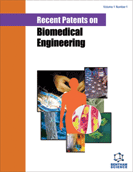Abstract
This review discusses current strategies, patents, and ongoing research that address the limitations of current practices and FDA approved devices for neural tissue regeneration. Current clinical practices for treating peripheral nerve damage utilize autografts and nerve guidance conduits (NGCs), which are only applicable for small nerve gaps of around 30 mm. Furthermore, there are no clinical treatments for central nervous system (CNS) damage; although a variety of scaffolds have been explored. Selecting the proper biomaterial is crucial in developing these NGCs and scaffolds. Current FDA approved NGC devices utilize different materials with varying advantages and limitations in biodegradability, rigidity (to withstand collapse after implantation), porosity, and biocompatibility (minimize toxic by-products). These advantages and limitations help outline ideal material properties that have been used in NGC design. One beneficial material property that has not been considered in these FDA approved devices is conductivity, which is important for neural applications since the key component of neural communication in the body is the action potential generated at the synapse. In order to address the limitations of current NGCs and incorporate other advantageous properties of materials (e.g. conductivity), different materials, fabrication techniques, and biological cues have been explored. This same logic can apply to developing scaffolds for CNS damage.
Keywords: Electric Stimulation, Electrospinning, Nerve Guidance Conduit, Neural Tissue Engineering, Peripheral Nerve Regeneration, Polymer, Spinal Cord Injury, Stem Cell
 31
31

